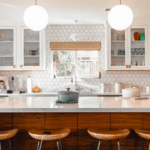It is believed that colours can have a psychological impact on how we as humans think, feel or act; there is a reason why it’s called ‘feeling blue’. With this in mind, it is wise to take into consideration what colours to put where when it comes to interior decor. Certain rooms should contain certain colours depending on the mood you want to be in each room; whether it’s the paint on the walls or a simple throw on a couch.
To take a deeper look into the psychology behind colours even different shades of one colour can have an impact. It is believed that a dark purple can seem dramatic so would be better suited to a living room; whereas a lighter shade can be more calming and could be put in a bedroom. Another thing to keep in mind is to avoid mixing more than three or more colours in a room, this can lead to the room being a bit chaotic and generally make people stressed.
The following infographic by EZ Living entitled “Psychology of Colour in Interiors” discusses the colours that should be used in each room from the paint and wallpaper to the furniture and accessories; and how the psychology behind them (e.g. red in the entrance hall to create a strong first impression). The infographic looks at what the experts have to say on the matter of psychology of colours. While also looking at the age-old 60-30-10 rule for timeless decoration when putting together a cohesive colour scheme; this rule is meant to give balance to the colours used in any space by splitting the room into 60% (main colour – walls, couches, rugs), 30% (secondary colour- curtains, bed lined, painted furniture ) and 10% (accent colour – beds, lamps, bedside tables).







